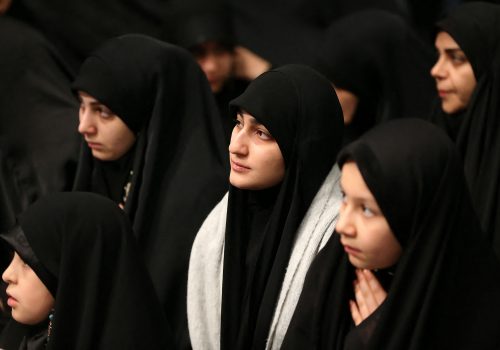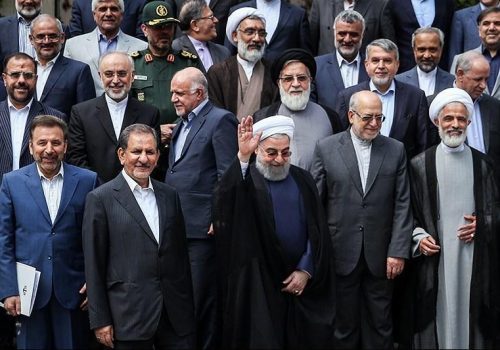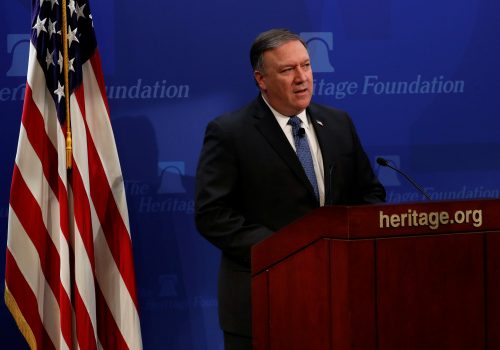How the Iranian air force turned the tide of the Iran-Iraq war in 1980
When historians speak of the Miracle of the Marne, a strategic victory for the Allies during World War I, they often remind their audience that one does not expect exhausted armies to assume offensive operations after days of retreat and defeat. In the case of the Iranian armed forces, commonly known as the Artesh, one must speak of months of prosecution, summary executions, and an almost complete breakdown of the chain of command following the 1979 Islamic revolution. Yet, despite all odds, the Artesh chose to fight bravely when the Iraqi army invaded Iran on September 20, 1980.
The eight-year bloody Iran-Iraq war (1980-1988) stands out as the longest conventional military conflict in the twentieth century. By its end, the conflict had killed or wounded more than one million people on both sides. After almost four decades, there is an increasing debate in Iran regarding the role of the professionally trained Artesh compared to the then newly established Islamic Revolutionary Guard Corps (IRGC), which was comprised of poorly trained volunteers. In this context, commanders of the Artesh are increasingly pushing back against a previous narrative, which largely misrepresented and discounted the critical role of the Artesh in repelling the Iraqi attack.
The Iraqi invasion began in the backdrop of the massive purges of the “loyalist” Iranian military after the revolution. Iran’s new rulers had an overall distrust of the Shah-era members of the military, especially the “Shah’s pilots.” Just months before the war, there was a failed coup attempt in July 1980 by Iranian air force officers, along with other branches of the Artesh. Reports indicate that in its aftermath, an estimated two thousand to four thousand military personnel, including pilots and senior air force commanders, were dismissed from service, imprisoned, or executed. Deprived of experienced personnel, commanders of the Artesh—who included a number of colonels and majors—were pushed up to replace more senior officers. For example, Colonel Javad Fakouri, then commander of the air force, was in his post for less than a year while also serving as the minister for national defense. The overall situation had left the Iranian military extremely vulnerable to the Iraqi invasion. Some would later argue that this is partly why Saddam Hussein invaded Iran in the first place.
The breakdown in military discipline was astonishing. Colonel (Ret.) Manouchehr Shiraghayi, an F-4 Phantom II pilot, stationed at Bushehr Sixth Tactical Air Base (TAB) wrote in his memoirs, “NCOs [non-commissioned officers] had formed councils to run the base. Some days they ordered NCOs not to wear uniforms.” As a young first lieutenant, Shiraghayi had to seek permission from these councils to have guests in his residence. No one could have ignored the negative impact on personnel morale. Similarly, Brigadier General (Ret.) Alireza Namaki, then a Captain in the Sixth TAB, recalls that: “Homafars were often on strike. The day Iraq attacked, I was coming back from a meeting with some of them who had been protesting again.”
Despite the organizational collapse of the Iranian military and the departure of American military advisors at the onset of the revolution, the Islamic Republic Iranian Air Force (IRIAF) displayed remarkable performance during the first year of the war. In fact, the IRIAF managed to quickly respond to Iraqi attacks on Iranian air bases on the same day of the Iraqi invasion of Iran. The Third and Sixth TABs launched Operation Revenge within a few hours of the Iraqi attack. Accordingly, eight Iranian F-4 Phantoms from Hamedan and Bushehr attacked two air bases in Iraq. Iran lost one Phantom, marking the first Iranian combat casualties. Brigadier General (Ret.) Rouholdin Aboutalebi, then a junior officer in Shiraz Seventh TAB, remembers: “I put on my flight suit as I was running in the street, wearing my boots.” He hailed a colleague and he was airborne in less than six hours for a Combat Air Patrol (CAP) mission. Similarly, General Namaki recalls that, “When the war started, we all became united in defending our motherland.”
On the second day of the war, the IRIAF launched Operation Kaman 99, one of the biggest airstrikes in military history by deploying 140 fighter bombers to Iraq, targeting oil refineries, air bases, and other strategic installations to “slow down the Iraqi advances inside Iran.” Brigadier General (Ret.) Fereydoun Samadi, then a major and deputy commander of the Sixth TAB in Bushehr, remembers the briefing that morning: “Our commander… Lieutenant Colonel Mehdi Dadpay started the meeting by saying, ‘Well gentlemen, we have been wearing these uniforms to serve Iran in such an hour… We have been trained for this moment.’”
Hours of training and discipline imposed during the monarchy under Mohammad Reza Shah Pahlavi were paying off. “More than two hundred airplanes were airborne that day. We wanted to end the war as soon as possible. However, there were not enough ground forces to meet the enemy,” Aboutalebi, who served as an F-14A Tomcat pilot, recalls. In fact, Iranian Tomcats purchased under the shah, despite massive shortages of spare parts and limited supplies of their expensive long-range AIM-54 Phoenix missile, played a critical role in providing air cover and protecting Iran’s shipping lines and critical infrastructure. Military historians have indicated that by January 1981, Iranian Tomcats had scored thirty-three kills against the Iraqi air force.
While the IRIAF slowed down the Iraqi divisions, Iranian ground forces were slow to mobilize. Instead of permitting volunteers to join the ranks of the Artesh, a new organization, the Basij, was established, which was placed under the IRGC command. After losing most of its senior commanders, many of its officers, and experienced NCOs, the Iranian army was not in any shape to mount offensive operations. Hence, it fought a defensive war. Many of the revolutionaries still comment on the army’s absence, claiming that it was only the IRGC and volunteers who were there to meet Iraqis on the ground. However, the Artesh had deployed all of their available units. Few remember that, in the immediate aftermath of the 1979 revolution, the provisional government had reduced the duration of the draft from twenty-four months to twelve months, cutting the army’s strength even further by sending home many trained soldiers.
Meanwhile, in the early days of the conflict, lack of ground support threatened some IRIAF air bases. In less than eight days, Iraqi divisions manage to encircle the Vahdati Air Base belonging to the fourth TAB in Dezful. Colonel Bahman Forghani, the de-facto commander of the base, called President Abolhassan Banisadr, who was then the commander in chief of Iranian armed forces, requesting assistance. Forghani was told to hold off the enemy for forty-eight hours. He launched all available F-5 Tigers against advancing Iraqi column in Khuzestan province. “Whenever [the] Iraqis established a bridge over Karkheh River, we bomb[ed] it and then strafed their advancing units.” Iranian pilots conducted 378 sorties in one day, losing five F-5 Tigers to enemy fire. Iraqis were never able to cross the River Karkheh. The IRIAF’s vigilance denied Iraq the strategic success it needed to sever the southwestern province from the rest of Iran in order to claim it as an Arab territory, as promised by Saddam. “Our pilots stopped the enemy by sacrificing themselves and their aircraft,” Colonel (Ret.) Forghani told me.
The aircraft and equipment possessed at the onset of the Iran-Iraq war were among the most advanced military technology. Today, the balance is reversed. Iran’s neighbors operate the more advanced aircraft supported by a vast network of advisors and a global supply chain of parts. The IRIAF is using a mix of old American aircraft—all older than forty years—and Soviet made airplanes in addition to a few airworthy French Mirage F-1’s. Some in Iran hope that the IRIAF can acquire some modern aircraft with the expiration of the United Nations-imposed sanctions on arms in October, so that their country can experience another wave of renovation and modernization as it did during the 1960’s and 1970’s.
As Iran approaches the fortieth anniversary of the Iran-Iraq War, the debate over the role of Artesh has been intensifying. Reviewing facts and events on the ground has highlighted the role of the IRIAF and the Artesh by extension. And, though only a stamp was distributed last year to commemorate Operation Revenge as the first response to the Iraqi aggression, a new documentary on IRIAF operations is about to be released in Iran. The Iranian public is growing increasingly interested in the unofficial version of the war, eager to learn what the American-trained pilots and officers of Artesh did. They believe it is time to fill the gaps in the history of the Iran-Iraq war.
Ali Dadpay is an associate professor of finance at the Gupta College of Business at the University of Dallas in Texas. Follow him on Twitter: @adadpay.
Sina Azodi is a nonresident fellow at the Atlantic Council and a visiting scholar at the George Washington University’s Institute for Middle East Studies. He is also a PhD Candidate in International Relations at University of South Florida. Follow him on Twitter @Azodiac83.
Image: 12th Fighter Training Squadron in 1st Fighter Tactical Airbase, Mehrabad (Courtesy photo)


